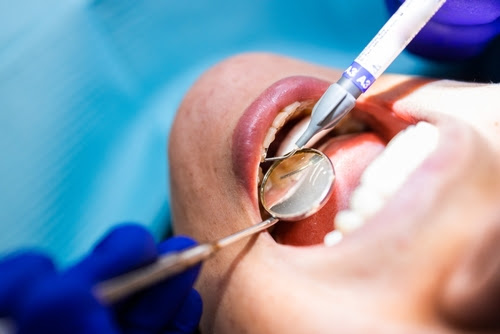Jaw or Neck Issues After Major Dental Work? Often There Is a Connection
The theme for this week …
Oh, the many ways that medical procedures can get our muscles confused!
This week we zero in on the impact of dental procedures to the jaw and neck muscles. When these muscles are tight the ease and your performance of activities can be impacted. Read on …
Insight of the week from Cara
Yes, dental work can throw your neck muscles off
If you’ve been reading this newsletter in the past year, you know I like to reference research or statistics about the topic of the week.
There is research about neck pain and dental work, however, it is all related to the dental provider, not the patient. Love to see a future study from the patient perspective!
More than a few Bridging® Institute clients have had neck and jaw tightness or pain which correlates with major dental procedures. Why would this be?
The pain is real!
If you’ve had extensive dental work (root canal, crown, implant) and your neck or jaw still bothers you weeks later, don’t assume it will just go away.
Why the pain? Let’s look at some of the reasons for the stress …
- You sit leaning backward with your head at an odd angle, mouth wide open (and they’d like wider!)
- The dentist is prodding, drilling, pounding and/or pulling in your mouth.
- You likely have anxiety and nerves so you tense your muscles and your nervous system can get a bit jacked up too.
Why do neck and jaw muscles get thrown off beyond self-recovery?
There are three factors which really play into challenging the muscles of the neck and jaw:
- Position: How tipped back and rotated was your head, and how wide was your mouth held open?
- Force: How much force, and which direction of force was used for the procedure, such as an extraction?
- Time: How long was your head twisted in the unconventional position?
Score high on each of these and chances are your muscles sent up the white flag. When the muscles shut down, you end up with stress and strain.
Why do neck muscle imbalances cause pain?
The muscle relationships get skewed during dental work so they no longer easily support your head in a front-facing position.
This skew creates stress after the procedure. There can also be increased swelling around the jaw and neck since the tight muscles crimp lymphatic drainage pathways.
Daniel’s story is a great example of how his dental work impacted his jaw, and how easily the muscles changed.
Case Study: Daniel’s neck and jaw pain
The dental procedure lasted two hours. He held his mouth WIDE open and his head in a slightly turned position. His jaw hasn’t been the same since the dental appointment, and he often feels a strain of his neck muscles on just one side.
What did we find?
As we turned his head passively to each side it was clear that his neck muscle tension was off-center. Unsurprisingly, the skew was in the direction his head had been turned for the dental work.
Daniel’s neck and jaw muscles got stuck in the position because of the amount of time they were held off-center.
How did Bridging® help?
We held his head and jaw in their off-center position and added a tiny, gentle rocking motion. By supporting and adding subtle movement his stuck neck muscles began to relax. Once the muscles were moving, they were able to reset their paired way of working together.
As the neck muscles re-centered, the tension holding his jaw also changed. The side that was tight began to soften, and the loose side got tighter. Overall, the muscles were more balanced which allowed for a better jaw alignment.
You’ll have to watch the video to see how easily his jaw and head started to move again! The session also seemed to leave his head movement more centered than before!
What can you do to help?
Bridging® is your go-to for quickly calming aggravated muscles. This fast help comes from two differentiating factors:
- Problem-solving: Taking the time to find the root cause of why your neck or jaw is bothering you. It might be related to something long-forgotten!
- Muscle reset process: The gentle rocking and stretching motion Bridging® uses, resets your muscle memory.

